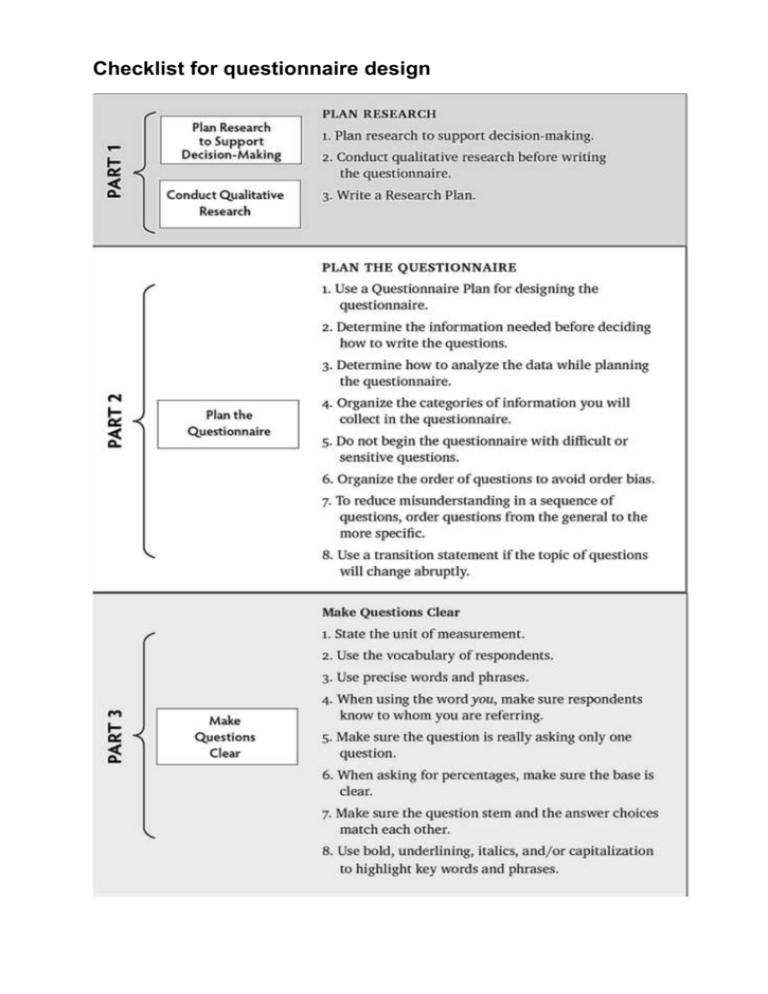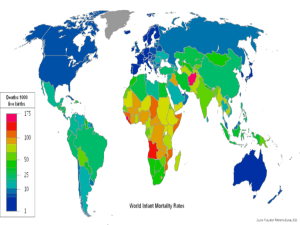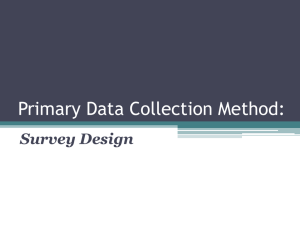Test your questionnaire
advertisement

Checklist for questionnaire design General considerations for questionnaire design Be explicit of the goals of your questionnaire Keep the questionnaire short. As a general rule, with only a few exceptions, long questionnaires get less response than short questionnaires. Make it easy to complete Use a questionnaire title short and meaningful to the respondent. Begin with a few non-threatening and interesting items. Non-sensitive demographic questions should be placed at the beginning of the questionnaire because they are easy to answer, non-threatening, and tend to put the respondent at ease. Place the most important items in the first half of the questionnaire since there is greater probability of the respondent answering the first section of the questionnaire. Sensitive items that cover controversial topics should be placed last so that potential resentment that may be provoked does not influence responses to other questions. Items on the same topic should be grouped together so each question follows comfortably from the previous question. Use section titles to help the respondent focus on the area of interest. Use simple and direct language, targeting the vocabulary and grammar to the surveyed population. The questions must be clearly understood by the respondent. One way to eliminate misunderstandings is to emphasize crucial words in each item by using bold, italics or underlining. Leave adequate space for respondents to make comments which might provide valuable information not captured by the response categories. Hold the respondent's interest providing variety in the type of questions used. Consider how to establish trust, increase rewards, and reduce social costs for respondents Watch out for questions that influence the answers to other questions. Provide incentives as a motivation for a properly completed questionnaire. Use good graphic design for the questionnaire. Make the questionnaire visually appealing. Devise a detailed Data Analysis Plan A checklist for reviewing questionnaire items 1. Will the question provide the data required by the research questions or the hypotheses? 2. Is the question unbiased? 3. Will the item generate data at the level of measurement required for the analysis? 4. Is there a strong likelihood that most respondents will answer the item truthfully? 5. Do most respondents possess sufficient knowledge to answer the item? 6. Will most respondents be willing to answer the item, or is it too threatening or too sensitive? 7. Does the item avoid ‘leading’ respondents to a specific answer? 8. Is the language used in the questionnaire clear and simple – so that all respondents are able to understand all of the questions? Test your questionnaire • • • • Are respondents willing to answer the questions in the form you propose to use? What are the country-specific response categories? Are any of the questions particularly difficult or sensitive? Do interviewers understand the questions? Extra training can focus on these questions. Do the respondents misinterpret the questions? Are any of the words ambiguous or difficult to understand? The pre-test should point to where changes in wording or improved translation are needed. • • • • Does the questionnaire flow smoothly? Can the interviewers follow the instructions easily? Is there adequate space on the form and are the answers clearly coded? The pre-test should show where the format needs to be improved before the final questionnaire is printed. Is it necessary to create new codes for common answers that were not included in the original questionnaires? How long does an interview take? The answer to this question will help you decide how many interviewers are needed and how long the fieldwork will take. Pilot test allows to identify: • The existence of possible ethical problems overlooked previously. • Whether the research questions or hypotheses are appropriate. • The feasibility and the appropriateness of the sampling method. • Whether the length of the questionnaire is appropriate • Whether the questions as they are worded will achieve the desired results • Whether the questions have been placed in the best order • Whether the questions are understood by all classes of respondent • Whether additional or specifying questions are needed or whether some questions should be eliminated • Whether the instructions to interviewers are adequate. • Whether additional training for interviewers, instrument administrators, experimenters, coders, and data editors re necessary?








